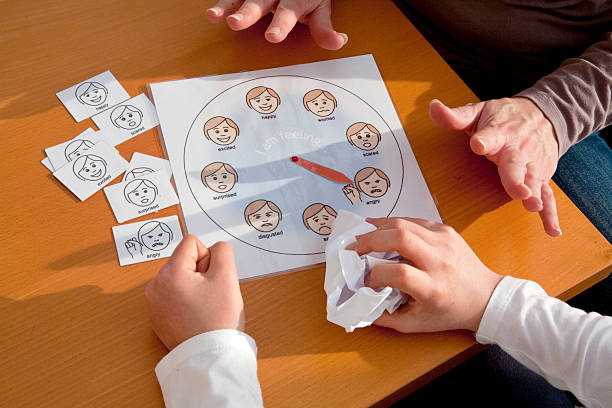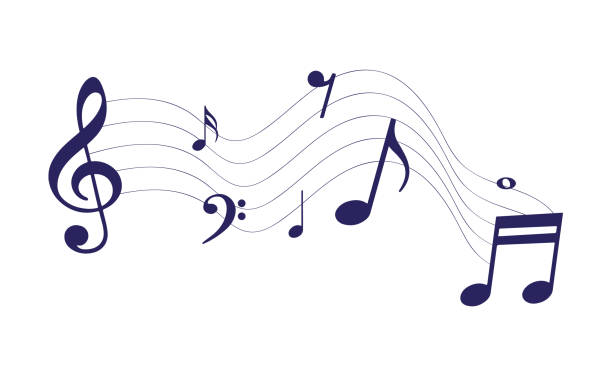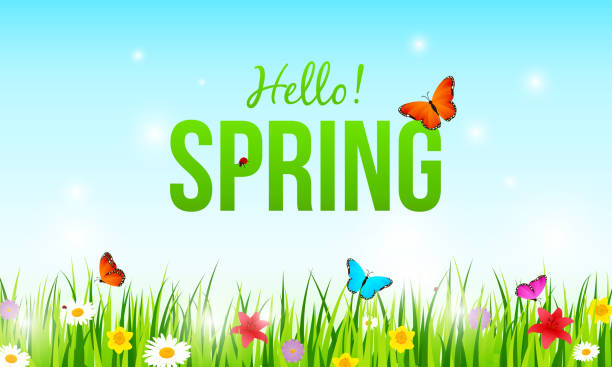How To Describe A Smile In Writing (15 Best Tips &Types)
How To Describe A Smile In Writing
How To Describe A Smile In Writing: Embarking on the journey to describe a smile in writing is like capturing a sunbeam in a bottle—a tantalizing endeavor that beckons the writer to dance between the tangible and the ethereal.
In the realm of words, a smile becomes more than a mere curvature of lips; it transforms into an intimate gateway to the soul’s most delicate symphonies.
Much like an artist wielding brushes, a writer navigates the canvas of emotions, using adjectives as pigments and sentence structures as brushstrokes to convey not just the anatomy of a smile, but its essence—the elusive magic that binds hearts across time and space.
So, let us venture forth into this alchemical realm of description, where a smile becomes a symphony, and a sentence becomes a masterpiece of emotion.

How To Describe A Smile In Writing
Describing a smile in writing involves more than just words; it’s about conveying emotions and creating a vivid image for your readers. Follow the step by step process on How To Describe A Smile In Writing:
Observe and Understand
Take time to observe real-life smiles, study facial expressions in movies, and read how different authors depict smiles in literature. Understand that smiles vary based on emotions, contexts, and characters.
Identify the Type of Smile
Determine the nature of the smile. Is it genuine, enigmatic, or forced? Recognizing the type of smile helps you set the tone for your description.
Set the Context
Establish the environment, mood, and characters involved. The context shapes the emotional backdrop against which the smile is portrayed.
Focus on Facial Details
Describe the physical aspects of the smile: the curve of the lips, the crinkling around the eyes, and any other facial changes. Use precise adjectives to convey the shape, intensity, and nuances of the smile.
Incorporate Body Language
Highlight the body’s response to the smile. Describe accompanying gestures, like a hand covering the mouth or a tilt of the head, to enhance the emotional impact.
Convey Emotions
Choose emotive adjectives that match the intended emotional impact. Connect the smile to broader emotions like joy, sadness, or excitement.
Utilize Metaphors and Similes
Employ metaphors and similes to add depth and symbolism. Compare the smile to elements from nature, objects, or experiences to evoke a specific atmosphere.
Integrate Dialogue and Thoughts
Include the reactions of other characters or the internal thoughts of the character wearing the smile. This provides insight into the emotional dynamics at play.
Consider Pacing
Adjust your pacing to match the emotional intensity of the smile. Slow down for significant moments, allowing readers to savor the emotion, and speed up for lighter or fleeting expressions.
Maintain Authenticity
Ensure that the description aligns with the character’s personality, the relationship dynamics, and the overall tone of your story. Authenticity enhances reader engagement.
Show, Don’t Tell
Rather than explicitly stating emotions, show them through sensory details, body language, and character interactions. Let readers experience the emotions alongside the characters.
Edit and Refine
Review your smile description for clarity and impact. Trim unnecessary details while retaining the core emotions. Experiment with different phrasings to find the most evocative combination.
Seek Feedback
Share your smile descriptions with peers or beta readers to gain insights and refine your writing. Constructive feedback can help you polish your descriptions further.
Practice
Regularly practice writing smile descriptions in various scenarios and contexts. The more you practice, the more adept you’ll become at ca1pturing different emotions and nuances.
Read Widely
Read a variety of authors and genres to expand your understanding of diverse smile descriptions. Pay attention to how different writers tackle this aspect of characterization.
Remember, the goal is to immerse readers in the emotions of the moment, to create a lasting impression through your skillful portrayal of a smile’s beauty and significance.
Types Of Smile In Writing
In writing, smiles can be described in various ways to convey different emotions or expressions. Here are some types of smiles and their potential meanings
The Genuine Smile
The Genuine Smile also known as the “Duchenne smile,” it involves a heartfelt expression of joy that engages both the muscles around the mouth and the eyes. This smile is considered authentic and reflects true happiness.
The Polite Smile
A courteous and socially appropriate smile used in formal or public settings. It may not necessarily convey genuine emotions but is employed as a polite gesture to acknowledge others.
The Smirk
Definition: A smug or self-satisfied smile, often accompanied by a slight raising of one corner of the mouth. It can convey confidence, amusement, or a sense of superiority.
The Contagious Smile
This smile is so warm and genuine that it has the power to make others smile in return. It often spreads joy and positivity in social interactions.
The Mona Lisa Smile
Named after the famous painting, it refers to a subtle and enigmatic smile that is mysterious and leaves observers curious about the true emotions behind it.
The Nervous Smile
Definition: Displayed in uncomfortable or anxious situations, this smile is often tight or forced. It may indicate unease or an attempt to conceal true emotions.
The Radiant Smile
A bright and beaming smile that exudes happiness and positivity. It is characterized by wide, open-mouthed expressions and can light up a person’s face.
The Ironic Smile
A smile that conveys irony or sarcasm, suggesting that the person may not fully agree with or believe what is being said. It often involves a subtle and knowing expression.
The Sympathetic Smile
Expressed in moments of empathy or understanding, this smile communicates compassion and support. It is often accompanied by a gentle and comforting demeanor.
The Coy Smile
A modest and reserved smile, often accompanied by lowered eyes. It can suggest shyness, playfulness, or a hint of flirtation.
The Prideful Smile
A smile that reflects a sense of accomplishment or self-satisfaction. It may involve a raised chin and a proud, confident expression.
The Sarcastic Smile
A smile that carries a mocking or sarcastic tone. It may involve a subtle curling of the lips, indicating insincerity or amusement at someone else’s expense.
Remember that these definitions are generalizations, and individual interpretations of smiles may vary based on cultural, social, and personal contexts.

Setting the Scene for the Smile
Amidst the opulent grandeur of a Venetian masquerade ball, where flickering candlelight casts an enchanting glow upon gilded masks and silk-clad figures, a single moonbeam dared to breach the decadent canopy above.
Its silver touch brushed against the edge of her delicate laughter, igniting a dance of shadows and light across the expanse of the masked crowd.
The soft rustle of satin and the distant strains of a waltz created an ephemeral symphony, framing the moment when his eyes found hers from across the room.
It was in this mosaic of whispered secrets and masked identities that her smile bloomed like a hidden gem, a treasure only he was privy to uncover—a smile that held the promise of an untold story, waiting to be unraveled amidst the tapestry of this Venetian night.
Describing the surroundings to create ambiance
Within the tapestry of storytelling, describing surroundings is the masterstroke that breathes life into mere words.
The surroundings become a symphony of sensations—the whisper of leaves conspiring in the forest’s embrace, the ancient stones that hold secrets in their weathered crevices, the incandescent cityscape that dances beneath a star-studded canvas.
Each detail meticulously woven becomes a thread connecting the reader to the world you’ve conjured, allowing them to taste the salty sea breeze, feel the gritty cobblestones beneath their feet, and hear the distant echoes of bustling markets.
In these immersive landscapes, the surroundings aren’t just a backdrop; they’re a living, breathing entity, a silent collaborator in the grand story being told.
Establishing the mood to enhance the impact of the smile
The mood, like a painter’s palette, sets the stage upon which emotions and expressions take center stage. It is the atmosphere that lingers in the air, a delicate fragrance that colors every word and gesture.
By deftly establishing the mood, a writer can amplify the impact of a smile, making it resonate with readers on a profound level.
A smile exchanged beneath a moonlit sky might evoke a sense of romance, while a smile amidst the chaos of battle could embody bravery against the odds.
The mood becomes the canvas upon which the smile’s hues are painted—the contrast that elevates its brilliance, the shadow that heightens its radiance.
In the symphony of storytelling, the mood acts as the conductor, guiding the reader’s emotions, harmonizing the narrative, and ensuring that the resonance of a smile reverberates far beyond the mere words on the page.
Anatomy of a Smile
A smile, a delicate dance of muscles and emotions, is nature’s most enchanting sleight of hand.
As the corner of lips ascend, a symphony of silent signals orchestrates its magic—the zephyr-like flutter of cheeks, the radiant glimmer in the eyes, and the alchemical fusion of vulnerability and joy.
It is as if the heart’s whispered secrets collaborate with the facial canvas to paint a portrait of unspoken truths. The curvature of the lips holds tales of laughter shared and battles conquered, while the eyes, those windows to the soul, shimmer with reflections of uncharted dreams.
In this intricate interplay, the anatomy of a smile transcends mere physiology, becoming an art form that binds us in a universal language of human connection.
The role of facial muscles in forming a smile
The face, a canvas of emotions, is a realm governed by an orchestra of intricate movements. The role of facial muscles in forming a smile is nothing short of a choreographed marvel.
As emotions rise like crescendos within, the zephyr-like quiver of muscles near the lips begins, setting off a cascade of events.
The orbicularis oculi contracts, and a symphony of wrinkles and creases trace the journey of joy from the heart to the surface. The cheeks, like billowing sails, rise in tandem, and the corners of the mouth ascend, curving like a crescent moon.
The intricate choreography of these muscles is what transforms an involuntary physiological response into a mirror of the soul—a smile, an expression as ancient as humanity itself, a universal language that transcends cultures, and a testament to the power of connection.
Highlighting the facial features involved: lips, eyes, cheeks
In the theater of emotions, the spotlight falls on the trio of lips, eyes, and cheeks—facial features that transform into instruments of expression.
The lips, soft and pliant, hold the poetry of a smile, curving upwards like the wings of a songbird ready to take flight. But it’s the eyes, those enigmatic windows to the soul, that give the smile its resonance.
They shimmer with unspoken stories, their corners crinkling in a dance of shared secrets. The cheeks, often overlooked, are the supporting actors, lifting with the swell of emotion, revealing the authenticity of the smile.
Together, these features are the notes that compose a symphony of sentiment—a harmonious blend that unites the physical and the emotional, and resonates long after the curtain of the moment falls.

The Spectrum of Smiles: Types and Contexts
Within the tapestry of human emotion, smiles emerge as kaleidoscopic brushstrokes, each hue revealing a different facet of the soul’s palette.
There is the sunburst of a genuine smile, a golden exhalation that warms hearts and kindles camaraderie on the coldest of days. Then, a veiled enigma unfurls—a smile that plays peekaboo with secrets, tantalizing as it conceals; a riddle painted across lips and etched into twinkling eyes.
Yet, not all smiles are birthed from the cradle of authenticity; some are chameleons of emotion, masquerading behind practiced grins while the eyes hold whispered confessions of melancholy.
Whether in the jubilant crescendos of triumph or the hushed sonnets of shared sorrows, the spectrum of smiles embodies the chiaroscuro of the human experience, each curve a story unto itself.
Beyond the Physical: Conveying Emotions
The artistry of language unfurls its wings when tasked with capturing the elusive dance of emotions that pirouette within a smile.
Adjectives become alchemists, transmuting mundane words into vessels of sentiment, crafting phrases that bridge the chasm between the visible and the invisible.
With ink, we can conjure the bittersweet tinge of nostalgia that lingers in the creases of a smile, or the intoxicating effervescence of newfound love that bubbles within its contours.
Yet, it’s not only the choice of words that wields power; it’s the unspoken language of body and heart—subtle quivers of the jaw, the tremor of lips on the precipice of laughter—that lend authenticity to the emotions inked onto paper.
In the symphony of letters and punctuation, we, the humble conductors, transmute mere descriptions into resonating chords of empathy, entwining the reader’s soul with the fragile beauty of human sentiment.
Choosing the right adjectives to evoke emotions
In the realm of descriptive prose, adjectives wield the power of enchantment, transforming ordinary words into vessels of emotion.
Choosing the right adjectives to evoke emotions is akin to selecting gemstones for a necklace—the hues must resonate, catching the light in ways that stir the soul.
A ‘gentle’ smile becomes a whispered secret, ‘effervescent’ laughter sparkles like champagne bubbles, and ‘wistful’ eyes carry the weight of unspoken dreams.
Adjectives serve as the palette from which a writer crafts their emotional landscape, infusing each stroke with the hues of sentiment.
With careful selection, these linguistic pigments evoke the entire spectrum of human feeling, enveloping readers in an embrace of empathy and forging an unbreakable bond between words and hearts.

Metaphorical Interpretations of Smiles
A smile, oh, it is the crescent moon of human expression, casting its beguiling glow across the tapestry of interactions.
Each smile becomes a portal, a porthole into the infinite cosmos of a person’s thoughts and feelings. It is a fragile bridge between two minds, a delicate filament spun from the threads of shared understanding.
Like a lighthouse amidst the storm, a smile can be the beacon of hope in the darkest hours, or a flicker of curiosity, inviting explorers to delve into uncharted territories of connection.
In its subtle curl, we find the map of a thousand journeys—the journeys that traverse the terrain of joy, sorrow, and unspoken camaraderie. Indeed, a smile is the celestial riddle we all know, but only the heart can decipher, the cipher to the unspoken language that binds us all.
Smiles as windows to the soul
In the mosaic of human expressions, smiles are the windows to the soul, offering glimpses into the inner sanctums of emotions and thoughts.
Much like a painter uses a canvas to portray hidden depths, a smile becomes the medium through which the heart’s canvas is unveiled.
A genuine smile radiates warmth like the first rays of dawn, illuminating the intricacies of a person’s joys and hopes. Conversely, a wistful smile might bear the weight of melancholy, revealing the shadows of unspoken sorrows.
Through these windows, one can catch a fleeting glimpse of vulnerability, courage, love, or even the guarded recesses of the mind.
Smiles transcend mere facial expressions; they are the ethereal bridges that connect souls, the silent conversations that weave the tapestry of shared human experiences.
Smiles as bridges between characters
Smiles are the bridges that span the chasm between souls, linking characters in an unspoken language of connection. Like fragile threads of lace, they weave bonds that words often struggle to convey.
A shared smile can forge alliances amidst adversity, unravel tensions in the face of conflict, or kindle the spark of intimacy in blossoming relationships.
It’s in the interplay of smiles that trust finds its foothold, empathy blooms, and the uncharted territory of understanding is explored.
These subtle gestures traverse the divide between characters’ worlds, whether in the flourish of camaraderie, the flicker of attraction, or the solace of shared dreams.
Within their simple curvature lies a universe of unspoken agreements, a testament to the profound impact of nonverbal communion on the canvas of storytelling.
The Curvature of Delight
A smile is a curve that sets everything straight. When someone smiles genuinely, their lips gently uplift, forming a graceful curve that hints at the happiness within.
It’s as if their joy finds its expression in the elegant arch of their mouth.
The corners of the lips ascend, revealing a glimpse of the inner joy that lights up their face.
Eyes Aglow with Happiness
A true smile is not confined to the lips alone; it extends to the eyes.
The eyes, often referred to as the windows to the soul, light up with a special gleam when one smiles wholeheartedly.
A genuine smile reaches the eyes, causing them to crinkle at the corners and emit a radiant glow that adds depth and sincerity to the expression.
Words that Dance
When penning down a description of a smile, one might use a rich tapestry of words and phrases that resonate with the experience.
Terms like “joyful grin,” “beaming expression,” “infectious mirth,” “gleeful countenance,” and “effervescent charm” can infuse the narrative with vivid imagery, allowing readers to visualize the smile and feel its emotional impact.
Crafting the Perfect Sentence
Crafting the perfect sentence is akin to weaving stardust into language, an alchemical endeavor where each word is a constellation, and punctuation marks are the dots connecting them across the expanse of thought.
It’s a symphony of rhythm and cadence, where syllables dance in harmony, a choreography that ignites imagination.
A well-crafted sentence is more than ink on paper; it’s a spell woven to conjure emotions, a time machine transporting readers to moments yet unknown.
It’s a tightrope walk between brevity and elaboration, each word a brushstroke on the canvas of the mind.
In the realm of these sentences, worlds are born, characters bloom, and emotions awaken—a tapestry of words that leaves an indelible mark on the reader’s soul.
Effective use of similes and metaphors to enhance the smile’s impact
In the realm of crafting evocative descriptions, similes and metaphors act as the jeweler’s tools, polishing ordinary phrases into dazzling gems.
When applied to smiles, these literary devices magnify the impact, elevating a simple expression into a vessel of profound sentiment.
A smile, when compared to the crescent moon, becomes a delicate sliver of radiance that lights up the night of emotions. Alternatively, likening a smile to a blooming flower evokes notions of growth, beauty, and the fragility of shared moments.
These imaginative comparisons allow readers to delve deeper into the emotions behind the smile, infusing the scene with layers of meaning and inviting them to explore the intricate nuances of human connection.
Examples from Literature and Media
In the grand tapestry of human expression, literature and media stand as the bejeweled crown jewels—each gem, a facet reflecting the infinite hues of the human experience.
From the haunting enigma of Mona Lisa’s elusive smile to the vivid palette of emotions splashed across Elizabeth Bennet’s countenance, these creations are the echelons where smiles transcend mere curves of lips and become the oracle of the heart.
In the hallowed halls of Shakespeare’s sonnets or the silver screens that capture a myriad of lives, smiles become mnemonic notes, whispered across time.
These examples are the constellations, guiding writers through the uncharted cosmos of description, igniting the spark that transmutes ink and imagination into universal artistry.
Reader Immersion and Engagement
Reader immersion and engagement are the twin rivers that converge into a boundless ocean of shared experience.
A masterful narrative doesn’t just invite readers to observe from a distance; it beckons them to wade into its depths, to feel the current of emotions and ideas swirl around them.
It’s a symbiotic dance—the author as the orchestrator, and the reader as the dancer, moving to the rhythm of each word, each pause. Immersion is the art of enchantment, where letters cease to be symbols and transform into portals, transporting readers into realms unexplored.
And engagement is the heartbeat, the pulse of curiosity that quickens with every turn of the page, every insight unveiled.
When crafted with the finesse of a maestro, reader immersion and engagement merge, birthing a transformative experience where the boundaries of reality blur, and the cocoon of the story becomes the cosmos of the mind.
Balancing show vs. tell to maintain reader engagement
In the realm of narrative finesse, the dance between showing and telling is a delicate choreography that shapes reader engagement.
While telling offers efficiency, showing engages the senses, enabling readers to immerse themselves in the experience.
When describing smiles, it’s the difference between stating “he smiled warmly” and painting a picture of “his lips curved upwards like the edges of a cherished old book, a glimmer in his eyes like sunlight dancing on water.”
Balancing these elements cultivates a textured narrative; it invites readers to co-create the scene, transforming passive observers into active participants.
A strategic blend of showing and telling, akin to a masterful composition, ensures that readers not only witness the characters’ smiles but feel their resonance in their own hearts.
Frequently Asked Questions (FAQ) about How To Describe A Smile In Writing
Why is describing a smile important in writing?
Describing a smile is crucial as it adds depth and emotion to your narrative. A well-crafted smile description can evoke vivid imagery, create a connection between characters, and immerse readers in the emotions of the scene.
How can I capture the subtleties of a smile?
Pay attention to the details: the curvature of lips, the crinkling of eyes, and even the posture of the body. Incorporate sensory cues, such as the warmth of a genuine smile or the cool detachment of a deceptive one, to make your descriptions more immersive.
What are some creative ways to convey emotions through smiles?
Experiment with metaphors and similes to liken smiles to elements of nature, emotions, or objects. Use vivid adjectives that evoke specific feelings, such as “melancholic,” “mirthful,” or “coy,” to convey the mood and sentiment behind the smile.
How can I make my smile descriptions unique and engaging?
Consider the context and the character’s personality. A smile that suits a mischievous character might differ from that of a sincere and earnest individual. Infuse your descriptions with the character’s perspective to make them authentic and engaging.
What role does body language play in describing smiles?
Body language complements smile descriptions by providing context and adding layers to the emotions. Describe how other body parts react, like a hand reaching up to cover a shy smile or shoulders shaking with suppressed laughter.
How can I strike a balance between descriptive and concise writing?
Choose your details thoughtfully. Highlight the most impactful aspects of the smile to create a vivid image without overwhelming the reader with excessive information. Show restraint, allowing the reader to fill in some gaps with their imagination.
Can I use metaphors to describe smiles?
Absolutely! Metaphors can infuse your smile descriptions with deeper meaning. Compare a smile to a crescent moon, a sunrise, or a hidden treasure to convey emotions indirectly and engage the reader’s imagination.
What’s the significance of smile descriptions in different genres?
Smile descriptions hold diverse roles across genres. In romance, they can symbolize affection and attraction; in mystery, they might mask hidden intentions. Tailor your descriptions to match the tone and themes of 0your genre.
How can I practice and improve my smile descriptions?
Observe people’s smiles in real life, in movies, and in literature. Experiment with different types of smiles and practice writing them in various settings and contexts. Share your descriptions with peers for feedback and insight.
How do I avoid clichés when describing smiles?
Think beyond the conventional. Instead of relying on overused phrases like “smile lit up their face,” find fresh angles and unique adjectives to portray the emotions and dynamics associated with the smile.
How can I convey a character’s emotions through another character’s perspective?
Use the observing character’s reactions and thoughts to reveal emotions linked to the smile. Show how the smile affects the observer—eliciting jealousy, empathy, or curiosity—enabling readers to feel the emotional ripples.
Can I use dialogue to enhance smile descriptions?
Yes, dialogue can complement smile descriptions by adding layers of interaction. Combine a character’s spoken words with their smile’s description to create a richer, multi-dimensional portrayal of the moment.
What’s the significance of pacing when describing a smile?
Pacing impacts the rhythm of your description. Slow down during important moments to magnify their emotional impact. Conversely, use swifter pacing to convey spontaneity or urgency in the context of the smile.
How do I evoke nostalgia or anticipation through smile descriptions?
Utilize sensory details and memory triggers that connect the smile to a character’s past experiences or future hopes. Mention scents, sounds, or visual cues that transport the character—and the reader—to a different time or place.
How can I ensure that my smile descriptions resonate with readers?
Tune into universal experiences. People can relate to the warmth of a genuine smile or the tension of a mysterious one. Craft your descriptions with authenticity and empathy to create an emotional bridge between your characters and your readers.
Conclusion
In the conclusion of How To Describe A Smile In Writing, describing a smile in writing is an art that bridges the intangible and the tangible, the unseen and the felt.
The process involves a symphony of details, adjectives, and metaphors that together paint a portrait of shared human experiences.
By carefully observing, selecting the right words, and considering the broader context, a writer can craft descriptions that not only convey the curvature of lips but also the depth of emotions.
Just as a smile transcends language barriers, a well-described smile transcends the boundaries of the page, inviting readers to partake in the timeless resonance of human connection and sentiment.
With practice and a keen eye, writers can master this delicate craft, enriching their narratives with the captivating magic of a smile.






